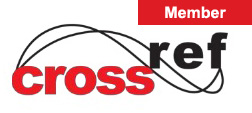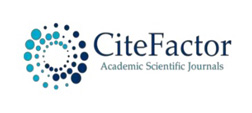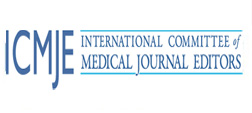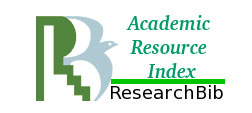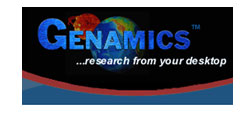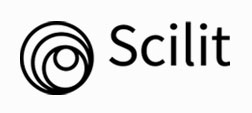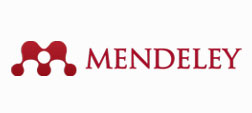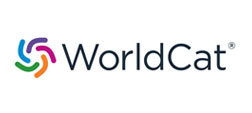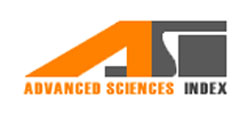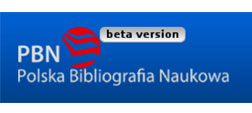Top Links
Journal of Hematology and Blood Disorders
ISSN: 2455-7641
Attributable Healthcare Cost and Length of Hospital Stay Associated with Heparin-Induced Thrombocytopenia
Copyright: © 2015 Al-Eidan FA. This is an open-access article distributed under the terms of the Creative Commons Attribution License, which permits unrestricted use, distribution, and reproduction in any medium, provided the original author and source are credited.
Related article at Pubmed, Google Scholar
Background: Heparin-induced thrombocytopenia (HIT) is a serious adverse drug reaction associated with an increased length of hospital stay (LOS) and utilization of healthcare services and even more so if heparin-induced thrombotic thrombocytopenia (HITT) occurs.
Objective: To determine the attributable healthcare cost and LOS of patients experiencing HIT compared with control subjects.
Methods: A retrospective case-control study conducted in hospitalized patients with HIT and their control subjects from January 1 to December 31, 2013. Of the 462 HIT assay performed, 29 HIT cases and 141 matched control subjects were evaluated. Healthcare costs elements attributed to HIT included laboratory tests, non-heparin anticoagulant, medical imaging, physician visits and LOS. The healthcare costs and LOS of cases, HIT and HITT, and control subjects were determined in US$, year 2013.
Result: Compared to the control subjects, the attributable healthcare cost and LOS were $3159 and 8 days for HIT cases and $18256 and 19 days for HITT cases, respectively. The HITT cases incurred median healthcare costs of $22893 compared with $7799 (p<0.001) for HIT cases without complication.
Conclusion: Heparin-induced thrombocytopenia is significantly associated with increased healthcare costs and an increased LOS. These findings suggest that using low-molecular-weight-heparin (LMWH) is one of the strategies aiming to reduce the incidence of HIT as well as the healthcare cost.
Keywords: Heparin-induced thrombocytopenia; Healthcare cost; Length of hospital stay
Heparin-induced thrombocytopenia (HIT) is a well known life-threatening, immune-mediated reaction to all heparin preparations [1-6]. Of the patient's who were exposed to unfractionated heparin (UFH) preparation, 3-5% developed HIT. Up to 2% of those exposed low-molecular-weight-heparin (LMWH) also developed HIT [7-9]. Patients who developed HIT had a high rate of venous thromboembolic complications leading to increased morbidity and mortality [4-6,10]. The healthcare costs are increased when patients develop HIT and even more so if heparin-induced thrombotic thrombocytopenia (HITT) occurs. Patients, at the very least, require longer hospital stay for parenteral administration of nonheparin anticoagulant as well as management of any thrombotic complications [11].
Although it is known that HIT and HITT have been associated with a negative impact on patient outcomes, the attributable healthcare costs associated with this adverse drug reaction have not been extensively studied. The objective of this study was to evaluate thehealth care costs and length of hospital stay (LOS) involved with HIT and identifies the main cost driver elements, based on a patient-oriented approach.
A retrospective case-control study design was used. All patients were newly diagnosed with a positive HIT using enzyme-linked immunosorbent assay (ELISA), confirmed clinically (using the pretest probability '4Ts'), were identified during the period from 1 January to 31 December 2013. The study was conducted in the King Abdulaziz Medical City (KAMC), teaching tertiary care centre in Riyadh, Saudi Arabia. Control subjects were matched using the following criteria: age (±1 year), sex, admitting services and admission date. From a pool of negative HIT subjects during the study period, 4-5 control subjects were identified for each case patient. Data on demographic characteristics (age, gender, non-heparin interventions, laboratory requests, medical imaging requests, length of hospital stay and admission classifications) were collected electronically from the hospital's Medical Informatics databases.Total healthcare cost of illness analysis, predefined HIT-relevant cost parameters (medication costs, bed costs, diagnostic and therapeutic interventions, laboratory tests, blood transfusions) were based on data from the Business Centre, KAMC.
The attributable direct Healthcare costs of HIT included (i) investigational laboratory tests for HIT and mentoring laboratory tests for HIT treatment; (ii) Non-heparin anticoagulant use for HIT; (iii) diagnostic medical imaging related to HIT and it's treatment; (iv) physician visits; (v) additional hospital days attributable to HIT illness. The components and unit prices for individual variables are listed in Table 1.
Data were summarized using median and interquartile ranges due tothe skewed (Shapiro-Wilks test p<0.05) cost distribution. We used Chi-square tests to compare categorical variables, Student's t-tests to compare differences in means, and Mann Whitney U tests to compare differences in medians. All p-values were two-tailed and statistically significant at an alpha of <0.05.
From January 1 through December 31, 2013, there were 9,989 adult hospital admissions who received low-molecular-weight heparin (LMWH) and 6,890 who received unfractionated heparin (UFH) for venous thromboembolism prophylaxis or therapeutic purposes. The incidence of HIT in patients receiving LMWH (enoxaparin) and those receiving UFH was 0.05% and 0.35%, respectively (p<0.0001), with an overall incidence of 0.17%. During the study period there were 462 suspected HIT cases, based on the HIT assays performed in the serology lab. Of those 462 suspected HIT cases, 29 patients were HIT positive (using ELISA assay and confirmed clinically using pre-test probability '4Ts') and 141 matched control subjects were identified and evaluated. The demographic characteristics and healthcare cost data for all case patients (HIT+HITT) and their matched control subjects without HIT are provided in Table 2. With respect to age, sex and admitting services the two groups were statistically similar. Cardiac science and surgery departments admitted the most patients. Significantly, case patients had longer LOS (P<0.001). The healthcare costs for each case patient and control subjects were determined. The median (IQR) healthcare cost percase patientwas $9469 (6308-17246) compared to $4640 (3985-5791) for the matched control subjects (P<0.001).
Table 3 summarizes the demographics of the subgroups of case patients. Of the 29 case patients with HIT, eight case patients with HIT were complicated with thrombosis (HITT).
Among the eight cases with HITT, three patients developed deep vein thrombosis (DVT), one patient with pulmonary embolism (PE), three patients developed lower limb ischemia and one patient was diagnosed with a stroke. There were no statistical differences between the two subgroups in terms of age and sex. The median LOS of HITT cases was higher than HIT cases but not statistically significant (P= 0.079), while the median healthcare cost of HITT was statistical significant compared to HIT cases without thrombosis (P<0.001).
The total attributable healthcare costs and LOS of HIT patients are summarized in Table 4. All patients, both controls and cases, had an ELISA assay done. All HITT patients were treated with intravenous argartrobanas nonheparin anticoagulant, while the majority HIT patients without thrombosis were treated with subcutaneous fondaparinu.
The potential annual healthcare cost savings attributable to LMWH prescribing over UH is illustrated in Table 5. If the total of 16879 patients during the study period who are entitle to received heparin (LMWH or UFH) in KAMC prescribed LMWH instead of UFH a total healthcare cost saving of $44065 would be attributed to lower cases of HIT associated with LMWH
A total of 29 newly diagnosed HIT cases during the period of January 1 to December 31, 2013 from our previous study [12] were included along with a total of 141 matched control subjects. The incidence of HIT in this study was 0.05% in patients receiving LMWH (enoxaparin) and 0.35% in those receiving UFH, with an overall incidence of 0.17%.The incidence rate reported in this studyis lower than previously published figures [1-5,7]. This study provides the direct medical healthcare costs associated with positive HIT cases and negative HIT subject's data tertiary healthcare centre in Riyadh, Saudi Arabia.The result showed that the median healthcare cost incurred in the management of positive HIT was significantly more than the healthcare cost incurred in the management of control matched subjects. The increased healthcare cost is primarily due to increased LOS and HIT management. Data on the economic impact of HIT are still limited and focus on the direct healthcare costs. American authors who conducted a retrospective nested case-control study found that admissions that included development of HIT incurred an average healthcare cost of $56,364 compared with $15,231 for admissions without HIT [13]. Another small retrospective case-control analysis found that HIT patients had a 14.5 days increase in LOS, incurring an average loss of $14,387-$20,170 per patient [14]. Similarly, two European studies found a mean incremental healthcare cost of €3500-€9000 with higher costs in surgical patients than in medical patients, and the increased cost was driven by extended LOS and nonheparin anticoagulant [15-16].
The main costs of healthcare elements in this study for the control subjects were the laboratory testing in order to rule out HIT, monitoring platelet count levels and the use of nonheparin anticoagulant. The vast majority of the control subjects received fondaparinux. Only one patient received argatroban for two days, and was then switched to LMWH.
Although it is obvious that the healthcare cost impact of HIT and HITT is large and utilized many healthcare resources, the actual direct healthcare costs attributable to this adverse drug event remain largely unclear. The median healthcare costs incurred in the management of HITT cases were three times greater than the healthcare costs of managing HIT cases. Increased LOS related to the complications of HIT and their management using argatroban as non-heparin anticoagulant were the main elements that led to greater overall healthcare costs in the HITT cases. The median LOS of HITT cases was 11 days more and utilized ICU facilities more than HIT cases. Similarly, a small Canadian study found that healthcare costs incurred in the management of HITT cases were more than seven times greater than the healthcare costs of HIT cases [17].
The use of LMWH instead of UFH in hospitalized patients in KAMC and other healthcare centres in Saudi Arabia could save a lot of resource utilization services. This translates into a healthcare cost saving of $44065/year. Likewise, a retrospective study analyzing the cost of LMWH versus UFH showed that $32,981/year could be saved [13]. In another prospective clinical study, author's analyzed data from patients' registry. They found no difference in LOS, however, overall healthcare costs using UFH were much higher than the healthcare costs using LMWH [18].
One of the limitations of the costing analysis presented in this study was the use of Business Centre data for drug and other resources services pricing. Since our study data was derived in 2013 from a single-centre, the result may not apply to other healthcare centres due to variation in drug and resource utilization services charges.
In this single-centre, retrospective case-control study, the attributable health care costs of a case of heparin-induced thrombocytopenia (HIT+HITT) at KAMC was $4829 and was associated with a significantly longer LOS. The use of LMWH can reduce, but not eliminate, the incidence of HIT.
| Variables | Cost description | Unit cost |
|---|---|---|
| Laboratory test | ||
| HIT investigation | ||
| HIT ELISA | Test kit, reagents and lab technician time | 96 |
| Platelet count | Machine, reagents and lab technician time | 25 |
| Monitoring tests | ||
| aPTT | Tests performed during non-heparin anticoagulant administration including reagents and lab technician time | 21 |
| INR/PT | 21 | |
| Pharmacy | ||
| Non-heparin anticoagulant | ||
| Argatroban (250 mg vial) | Drug acquisition, pharmacist and technician time for preparation and consumable material (piggyback, needles, syringes, alcohol swaps, etc.) | 692 |
| Fondaparinux (5 and 7.5mg) | Cost/syringe unit dose | 48 |
| Warfarin (1,2,2.5 and 5mg) | Cost/tablet unit dose | 1 |
| Medical imaging related to HIT | ||
| Spiral CT | Machine, contrast and imaging technician time | 479 |
| MRI | Machine, contrast and imaging technician time | 638 |
| Ultrasound | Machine and imaging technician time | 240 |
| Chest X-ray | Machine and imaging technician time | 53 |
| Echocardiography | Machine and imaging technician time | 199 |
| Physician visit | Consultant visits and consultations | 75 |
| Bleeding management | ||
| Platelet | Blood product transfusion/2units | 825 |
| Blood | Blood transfusion/2units | 638 |
| Hospitalization/day by bed type | ||
| ICU | Cost/day | 399 |
| Surgical/medical ward | Cost/day | 173 |
| aPTT= activated partial thromboplastin; CT= computed tomography; HIT= heparin-induced thrombocytopenia; ELISA= enzyme-linked immunosorbent assay; ICU= intensive care unit; MRI= magnetic resonance imaging; INR= international normalization ratio Table 1: Cost description and associated unit cost (US$) |
||
| Characteristics | Case patients (HIT+HITT; n=29) | Control subjects (n=141) | P Value |
|---|---|---|---|
| Age | |||
| Median years, (IQR) | 67 (55-73) | 66 (52-75) | 0.911 |
| Sex, no. (%) | 0.382 | ||
| Male | 11 (37.9) | 58(41.1) | |
| Female | 18 (62.1) | 83(58.9) | |
| Admitting departments, no. (%) | 0.842 | ||
| Cardiac Science | 9 (31.0) | 43 (30.5) | |
| Surgery | 8 (27.6) | 39 (27.7) | |
| Intensive care | 4 (13.8) | 20(14.2) | |
| Internal Medicine | 4 (13.8) | 19 (13.5) | |
| Oncology/Hematology | 3 (10.3) | 15 (10.6) | |
| Hepatobiliary Science | 1 (3.5) | 5 (3.5) | |
| Length of hospital stay | |||
| Mean (±SD) | 26.2 (±11.9) | 15.1(±8.4) | <0.001 |
| Median (IQR) | 25 (16-33.5) | 13 (9-18) | <0.001 |
| Cost, median (IQR) | |||
| Length of hospital stay | 4417(2681-7730) | 2249(1557-3114) | <0.001 |
| Laboratory test | 1137(906-1319) | 549(465-645) | <0.001 |
| Medical imaging | 479(159-1177) | 130(0.0-185) | <0.001 |
| Non-heparin anticoagulant | 896(528-6242) | 41(0.0-210) | <0.001 |
| Physician visit | 1920(1400-2240) | 1760(1440-2080) | 0.595 |
| Total | 9469(6308-17246) | 4640(3985-5791) | <0.001 |
| HIT= heparin-induced thrombocytopenia; HITT= heparin-induced thrombocytopenia with thrombosis; IQR= interquartile range; SD= standard deviation Table 2: Demographic characteristics of heparin-induced thrombocytopenia case patients and control subjects |
|||
| Characteristics | HIT case patients (n=21) | HITT case patients (n=8) | P Value |
|---|---|---|---|
| Age | |||
| Median years, (IQR) | 64(57-75) | 58(27-68) | 0.450 |
| Sex, no. (%) | 0.976 | ||
| Male | 8(38.1) | 3(37.5) | |
| Female | 13(61.9) | 5(62.5) | |
| Length of hospital stay | |||
| Mean (±SD) | 24.3(±13) | 31(±9) | 0.182 |
| Median (IQR) | 21(15-30) | 32(21-37) | 0.079 |
| Cost, median (IQR) | |||
| Length of hospital stay | 3633(2595-5190) | 7909(4919-8817) | <0.001 |
| Laboratory test | 1276(944-1378) | 1062(752-1238) | 0.143 |
| Medical imaging | 293(0.0-592) | 1197(1184-1446) | <0.001 |
| Non-heparin anticoagulant | 672(490-970) | 9504(7268-11880) | <0.001 |
| Physician visit | 1760(1240-2080) | 2120(1620-2800) | 0.142 |
| Total | 7799(5815-10386) | 22893(16647-25432) | <0.001 |
| HIT= heparin-induced thrombocytopenia; HITT= heparin-induced thrombocytopenia with thrombosis; IQR= interquartile range; SD= standard deviation Table 3: Demographic characteristics of cases (n=29) |
|||
| Outcomes | HIT case patients (n=21) | HITTcase patients (n=8) | All (HIT+HITT) (n=29) |
|---|---|---|---|
| Total LOS, days | |||
| Median (IQR) | 21(15-30) | 32(21-37) | 25(16-33) |
| Attributable LOS | 8 | 19 | 12 |
| Total healthcare cost | |||
| Median (IQR) | 7799(5815-10389) | 22893(16647-25432) | 9469(6308-17246) |
| Attributable | 3159 | 18256 | 4829 |
| HIT= heparin-induced thrombocytopenia; HITT= heparin-induced thrombocytopenia with thrombosis; IQR= interquartile range Table 4: Total attributable length of hospital stay and healthcare cost (US$) associated with heparin-induced thrombocytopenia |
|||
| Variable | Using LMWH | Using UFH |
|---|---|---|
| Potential annual patients on heparin | 16879 | 16879 |
| Median length of hospital stay (day) | 13 | 13 |
| Daily cost of heparin (US$) | $10(40mg daily) | $8(5000IU twice daily) |
| Total annual healthcare cost of heparin | $2,194,270 | $1,755,416 |
| Annual no. of HIT patients based on HIT incidence | 8 | 59 |
| Median healthcare cost of HIT | $9469 | $9469 |
| Total healthcare cost of HIT/year | $75,752 | $558,671 |
| Total annual healthcare cost of heparin plus healthcare cost of HIT | $2270022 | $2314087 |
| Potential annual healthcare cost saving attributable to prescribing LMWH=$2314087-$2270022=$44065 |
||
| HIT= heparin-induced thrombocytopenia; LMWH= low-molecular-weight-heparin; UFH= unfractionated heparin Table 5: Potential annual healthcare savings using LMWH |
||

